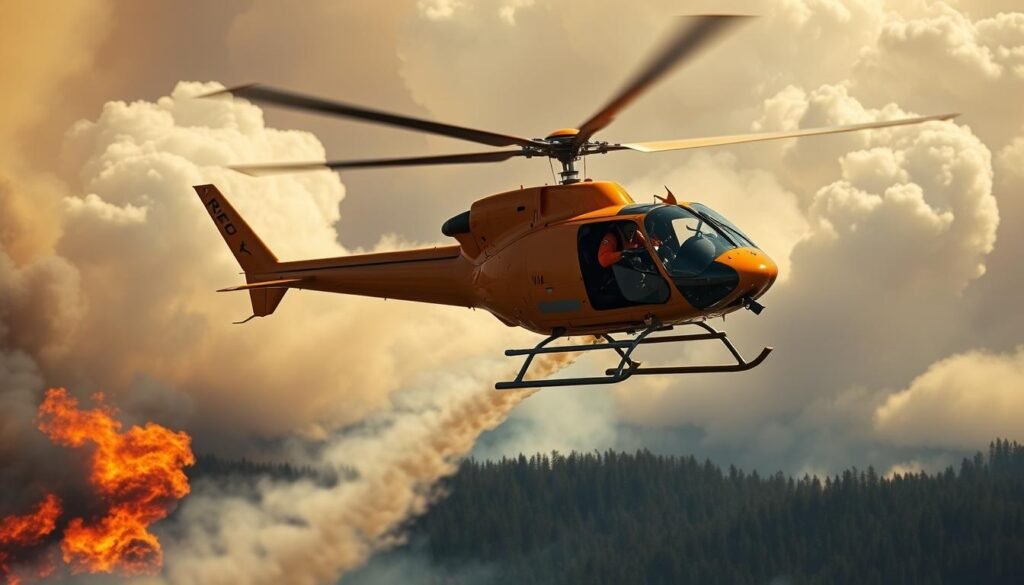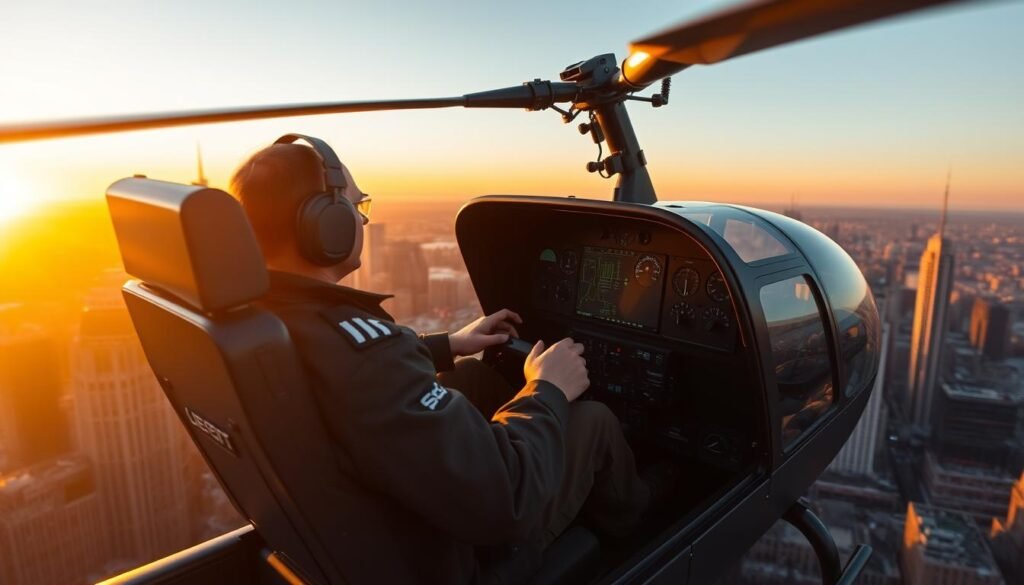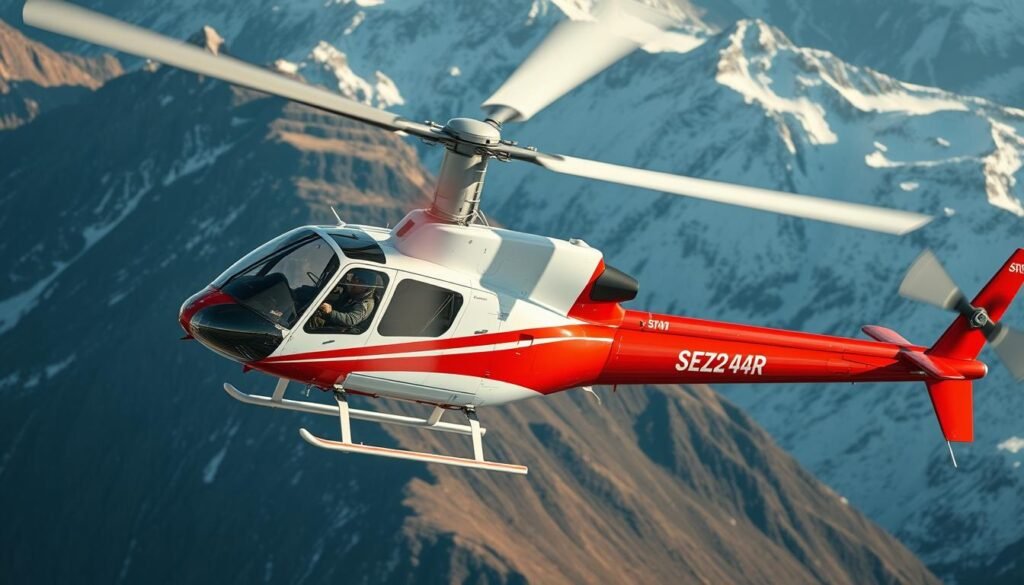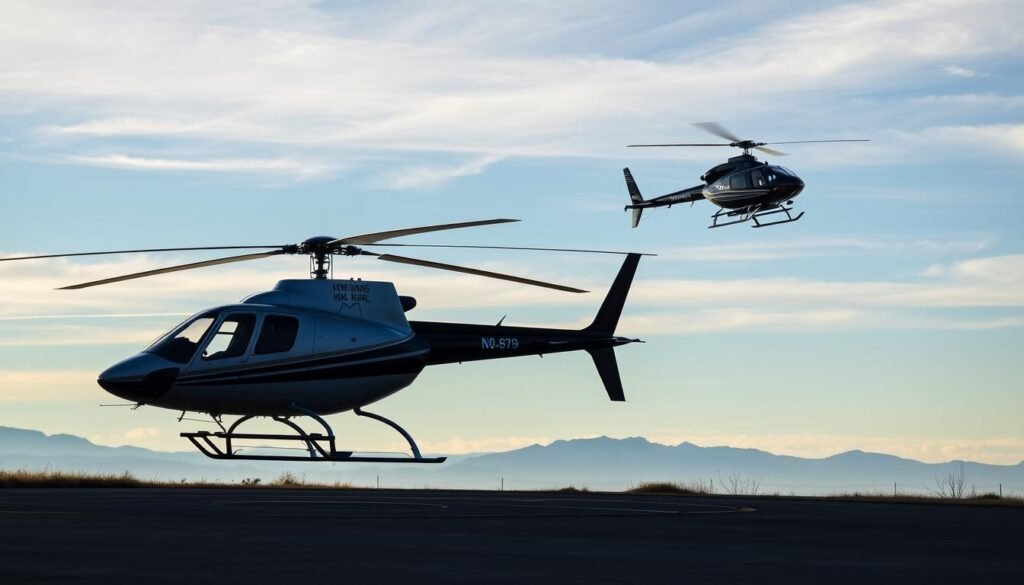Whether you’re building hours or planning your next leap, this guide maps the highest-paying helicopter pilot roles in 2025—complete with salary benchmarks, lifestyle trade-offs, and mission-specific insights. From VIP transport and offshore support to EMS, firefighting, law enforcement, ENG, agriculture, and instructing, we break down what each role pays, what it demands, and how to position yourself for top-tier offers.
If you’re looking for a full breakdown by role, employer type, and career stage, start with the Helicopter Pilot Pay Guide: Salaries by Role, Employer, and Career Stage—the anchor resource for this entire salary cluster.
Key Takeaways
- Top rotorcraft roles in 2025 vary by pay, risk, and schedule—compare beyond headline salary.
- VIP and corporate work often leads to the largest pay bands with irregular duty cycles.
- Offshore, EMS, and firefighting offer strong mid-to-high earnings tied to experience and certifications.
- Mission-specific skills (ATP, NVG, IFR) and hours milestones speed access to six-figure outcomes.
- Weigh lifestyle trade-offs—night duty, rotational deployments, and on-call shifts shape total compensation.
What Makes A Helicopter Pilot Job High Paying In 2025
Strong compensation in this field is driven by mission complexity, restricted crew rosters, and special qualifications.
VIP Transport Ranges and Bonus Drivers
Corporate and VIP seats often pay between $60,000 and $175,000+, with compensation rising for pilots who manage limited crew rosters, last-minute itineraries, and irregular schedules. Bonuses frequently appear when pilots accept on-call duty or long international legs. For a look at how flexible scheduling and lifestyle trade-offs shape pay in sightseeing and early-career roles, see Tour Helicopter Pilot Pay: What You’ll Earn Flying Sightseeing Routes.
Skills, Flight Hours, and Credentials That Matter
Higher pay tracks with logged hours, ATP or type ratings, and diverse aircraft experience. Airlines and firms favor pilots with IFR, NVG, or multi‑engine training—credentials that unlock access to premium aircraft and compensation tiers.
Lifestyle Trade-Offs Tied to Pay
On-call time, night rotations, and extended travel are often built into total compensation. Employers with small teams pay more to retain flexible pilots who can handle complex operations, tight schedules, and tough weather conditions.
“Mission complexity and availability are the two fastest levers for higher offers.”
| Role Type | Typical Range | Key Pay Drivers |
| Corporate/VIP | $60k–$175k+ | On-call, limited roster, irregular trips |
| Offshore | $45k–$110k | Hours, ATP, crew rotations |
| EMS | $60k–$150k | Night/weather skills, mission risk |
For hiring trends and employer lists, consult top companies hiring helicopter pilots to match your skills with market demand.
VIP And Corporate Transport: Top-Tier Pay For High-Touch Operations
Executive transport roles reward pilots who combine precise flying with strict client service and near-constant availability.
VIP transport pilot earnings typically range from $60,000 to $175,000+ per year. Short-notice departures, client confidentiality, and holiday coverage push pay toward the top end. Employers add annual bonuses tied to reliability, safety metrics, and discretion.

Typical Ranges and Bonus Drivers
Corporate helicopter pilot salaries vary widely based on company size and sector. Finance, tech, and sports firms often offer the richest packages, with base pay ranging from $60,000 to $175,000+. Bonuses rise when pilots accept on-call windows, extended travel, or international legs. For a breakdown of compensation trends in business-critical aviation, see Corporate & Offshore Helicopter Pilot Salaries: Flying for Big Business.
Core Skills and Hours Experience
Corporate operators prioritize strong CRM, polished passenger service, and precision urban operations. IFR, night currency, and helipad experience distinguish top candidates—especially those flying twin-engine aircraft or managing high-profile itineraries.
Lifestyle Trade-Offs and Availability
Small flight departments often mean frequent time away. Expect flexible days mixed with unpredictable launch times in exchange for premium compensation. Employers pay more to retain pilots who are available, discreet, and capable of handling complex logistics.
“Availability and a spotless safety record are the fastest levers for top corporate offers.”
| Factor | What It Means | Impact on Pay |
| Short-Notice Ops | Departures with little lead time | Higher base and bonus potential |
| Aircraft Type | Single vs. twin and complex systems | Stepping up increases pay bands |
| Currency & Training | IFR, night, city helipad skills | Favors elite roles and raises offers |
Offshore And Utility Operations: Offshore Helicopter Pilot Salary And Conditions
Offshore and utility roles deliver steady rotations and reliable pay that many rotorcraft crews prefer.
Salary Outlook: Entry-level offshore pilots commonly start near $45,000. With ATP, overwater experience, and stable rotations, experienced crews reach roughly $80,000–$110,000. Predictable 14/14 or 21/21 schedules help make annual income more reliable than some other sectors.

Aircraft, Hours, and Credential Needs
Offshore roles often require an ATP for larger aircraft and cargo operations. IFR and overwater proficiency accelerate access to higher pay bands, especially for pilots flying twin-engine helicopters in variable conditions. Companies typically list minimum hours and multi‑crew experience in job postings. Recurrent simulator training and type ratings are common upgrades that support safety and mission readiness. For a breakdown of offshore pay structures and credential expectations, see Corporate & Offshore Helicopter Pilot Salaries.
Weather, Rig Operations, and Safety
Offshore missions include rig transfers, vessel deck landings, and sling loads in unpredictable sea states. Pilots must manage narrow safety margins during approach and takeoff, often in choppy weather and low visibility.
“Consistent decision-making in marginal weather is the single biggest trait employers prize.”
Salary Trajectory and Rotation Models
- Entry-level pay starts around $45,000
- Experienced pilots earn $80,000–$110,000 depending on aircraft category, ATP, IFR, and overwater currency
- Rotations (14/14, 21/21) create steady income and structured benefit packages
- Storm evacuations may trigger hazard pay and disrupt schedules
| Factor | Typical Requirement | Impact on Pay |
|---|---|---|
| Minimum hours | 1,000–2,000 TT with multi‑crew experience | Access to mid‑rate contracts |
| Certifications | ATP, IFR, offshore survival | Unlocks higher aircraft and pay bands |
| Rotations | 14/14, 21/21 schedules | Predictable annual income and benefits |
| Operational risk | Deck operations, rough seas | Higher hazard compensation |
- Train for shipboard landings and coastal ops to build relevant experience.
- Maintain IFR and overwater currency plus recurrent sim time.
- Target ATP and type ratings to qualify for large aircraft roles.
Bottom line: Offshore and utility work offers steady, year‑round pay and transferable skills. For pilots who want predictable rotations and benefits, these sectors remain among the most reliable choices in the industry.
Emergency Medical Services (EMS): High Salary Rotorcraft Careers With Purpose
Air medical roles pair urgent missions with a clear path from entry pay to six-figure earning potential. EMS ranks among the most rewarding options for pilots seeking meaningful work and strong compensation growth. For a breakdown of salary progression and mission-readiness expectations, see EMS & Medevac Helicopter Pilot Salaries: What Life-Saving Roles Pay.
Salary Progression and Credential Mix
Entry-level crews commonly start around $60,000–$70,000. With consistent performance, availability, and recurrent checks, pilots can reach $150,000 or more. Employers favor ATP candidates and value decision-making in marginal weather. NVG experience, confined-area landings, and strong cockpit resource management are high on hire lists.
EMS fleets mix single and twin-engine aircraft. Moving to IFR-capable or twin platforms typically lifts pay bands. Prior HAA or SAR exposure and relevant hours speed hiring.
Lifestyle and Operational Demands
Routine hospital calls and rapid scene work create intense schedules. Night flying, weekend availability, and unpredictable missions are common. Pilots must balance fatigue through disciplined rest and duty limits to sustain long-term performance in this demanding, purpose-driven sector.
“Saving lives nightly rewards pilots with both purpose and competitive pay.”
Career Tips
- Maintain IFR and NVG currency and complete recurrent sim training
- Log confined-area and multi-aircraft experience
- Be available for nights/weekends to access premium shifts
Firefighting: Risk-Adjusted Pay For Seasonal And Overtime Operations
Firefighting is a high-reward, high-skill track that spikes during active seasons. Base pay for crews often sits around $80,000–$90,000 per year, while ATP-qualified personnel can exceed $175,000 in busy years through overtime and heavy-lift assignments.

Pay Bands and Overtime/Standby Structures
Wildland firefighting pilots often earn a base salary plus hourly standby rates. During peak months, overtime and surge deployments push total compensation well above base pay. Contractors may add per diem, travel stipends, and hazard premiums—making annual income highly dependent on season length and operational tempo. For a breakdown of wildfire pay structures and mission demands, see Firefighting & Rescue Helicopter Pilot Pay: High-Risk, High-Reward.
The National Interagency Fire Center (NIFC) outlines aviation resource standards, seasonal readiness, and aircraft requirements for federal and contracted firefighting missions.
ATP, Heavy-Lift Aircraft, and Wildfire Mission Demands
Operations include water or retardant drops, crew and equipment shuttles, and sustained sorties along fire edges. Heavy-lift experience and ATP credentials unlock access to larger aircraft and higher pay bands. Currency in external-load and low-level flight is essential for safety and compensation.
| Factor | Typical Impact | Why It Matters |
| Standby Hourly Rate | Extra pay while available | Raises baseline earnings during season |
| Overtime | Significant pay spike | Common in multi-week incidents |
| Heavy-Lift / ATP | Top-tier contracts | Access to larger aircraft and higher salaries |
Conditions—high heat, smoke, steep terrain—demand precise decision-making.
Off-season utility or training work helps smooth income across the year.
“Seasonal availability and proven heavy-lift skill sets are the fastest levers for higher offers in wildfire work.”
Career Tips
- Build utility sling and mountain-flying experience
- Maintain external-load currency and recurrent sim training
- Target ATP and type ratings to qualify for heavy-lift contracts
Bottom line: Firefighting appeals to pilots who want impactful missions and the chance to spike earnings in peak months. The work is tough, but the community and financial upside make it a standout track within rotorcraft operations.
Law Enforcement Aviation: Stable Pay With Mission Variety
Law enforcement aviation blends steady public service with varied aerial missions that keep each shift different.
Core duties include patrol, aerial surveillance, search rescue, disaster response, and direct support for police operations. These missions shape compact, tactical flight segments and frequent task-switching.

Duties, Hiring Paths, and Salary Growth Potential
Law enforcement pilots typically start around $60,000–$70,000 and can progress toward $175,000 with advanced training, seniority, and leadership roles. Departments vary: some require sworn officer status, while others hire civilian pilots who meet hour minimums and pass rigorous background checks. For a breakdown of agency pay structures and hiring models, see Police & Border Patrol Helicopter Pilot Salaries.
The ALEA Aviation Unit outlines aircraft capabilities, mission types, and pilot expectations for multi-role law enforcement operations.
Training Expectations and Aircraft Platforms
Pilots are often expected to demonstrate NVG and FLIR system proficiency, tactical communications, and multi‑unit coordination. Aircraft range from light singles to twin-engine multi-mission platforms outfitted for surveillance, rescue, and pursuit.
“Documented hours, mission ride-alongs, and systems familiarity make candidates stand out.”
Career Stability and Operational Rhythm
- Shifts: Fixed schedules in some agencies; incident-driven flexibility in others
- Benefits: Steady pay, pension options, and long-term career stability
- Preparation: Log hours, gain tactical systems exposure, and pursue ride-along experience to strengthen applications
For context on broader compensation trends and how training affects earnings, see the pilot salary landscape.
Electronic News Gathering (ENG) And Agriculture: Solid Earnings In Niche Roles
ENG and agricultural flying each carve a reliable niche for pilots who want clear trade-offs: steady city work or seasonal rural spikes.
ENG pilots often start near $50,000–$60,000 and can reach about $80,000–$90,000 as they log hours and build a reel. Constant news cycles in metros create steady demand and predictable short-route operations, like traffic, breaking news, and weather tracking. These flights are usually lower risk than many missions because sorties are short and teams are seasoned in rapid scene work.

ENG Profiles and How to Break In
Electronic News Gathering (ENG) flight profiles emphasize quick turnarounds, altitude shifts for camera framing, and tight coordination with producers. Pilots are rewarded for clean footage, reliability, and broadcast-safe maneuvers. To approach employers, build a portfolio of clips, document flight hours carefully, and highlight precision flying in urban environments. For a look at metro-based aerial work and lifestyle trade-offs, see Tour & Charter Helicopter Pilot Pay: What You’ll Make Flying for Leisure.
Agriculture: Seasonal Pay and Hazards
Agronomy operations commonly start at $50,000–$60,000 and can reach $110,000–$130,000 on large contracts during 6–9 months of intense flying. Compensation may come as hourly rates, per-acre contracts, or seasonal retainers. Ag work carries distinct hazards: low-level flying, heavy loads, wires, obstacles, and chemical handling. Rigorous safety procedures and specialized training are non-negotiable. The National Agricultural Aviation Association (NAAA) offers resources on pilot certification, safety standards, and operational best practices.
Comparing Schedules, Equipment, and Skill Growth
- Hours Experience: Mentorship and targeted sorties accelerate skill development in both niches
- Schedules: ENG favors city-based shifts; ag demands early-morning and evening sorties during peak months
- Equipment: Camera-equipped light singles for ENG; spray systems and rugged platforms for ag operations
“Both niches reward focused skills—ENG for steady, metro-based work; agriculture for seasonal, high-intensity earnings.”
Transitioning between these roles diversifies a resume and broadens appeal to companies that value versatile pilots. For many, ENG offers predictable rhythms while ag delivers seasonal income spikes tied to intense field operations.
Highest Paying Helicopter Pilot Jobs: 2025 Shortlist by Earning Potential
For pilots chasing rapid pay growth in 2025, a shortlist of top sectors points directly to VIP transport, offshore rotations, EMS, firefighting, law enforcement, ENG, agriculture, and elite instructor roles. These tracks offer strong compensation ceilings, mission diversity, and clear pathways from entry-level to six-figure earnings.
For a full breakdown by role, employer type, and career stage, see the Helicopter Pilot Pay Guide: Salaries by Role, Employer, and Career Stage.
Quick Shortlist and Ceiling Potential
- Corporate/VIP and firefighting (with ATP and heavy-lift) offer the highest ceilings
- EMS and law enforcement move fast to six figures with NVG/IFR and night experience
- Offshore and agriculture provide steady rotations and seasonal spikes
- ENG and instructor roles deliver reliable early earnings and pathway hours
Best Roles for Fast Salary Growth
Target roles where overtime, standby, or seasonal months can accelerate income.
- Firefighting and corporate work often reward overtime and on-call windows
- EMS and law enforcement pay more for night and marginal-weather currency
How Flight Training, Hours, and ATP Unlock Top Roles
Fast-track steps:
- Complete targeted flight training (IFR, NVG, external-load)
- Build flight hours in mission-relevant operations—EMS, utility, or ENG sorties count most
- Earn an ATP and add type ratings to qualify for larger aircraft and top contracts
- Review FAA Airman Certification Standards to align checkride prep with hiring expectations
“Documented checkride passes, instructor recommendations, and mission hours are the fastest resume boosters.”
| Role | Typical Pay Range (2025) | Fast-Track Requirements | Best Fit Lifestyle |
| Corporate / VIP | $60k–$175k+ | IFR, night, discretion, type experience | Irregular hours, travel-heavy |
| Offshore / Utility | $45k → $80k–$110k | ATP, overwater, multi‑crew hours | Rotational blocks (14/14, 21/21) |
| EMS / Emergency | $60k–$150k | NVG, IFR, confined-area experience | Night shifts, mission-driven |
| Firefighting / Law / ENG / Ag / Instructor | $50k–$175k+ | External-load, FLIR, low-level, instructor certs | Seasonal or steady depending on role |
Action Plan
- Enroll in a program that aligns training with your target role
- Use flight instructors and mentors to structure hours efficiently
- Time simulated sessions and checkrides to match peak hiring months
- Resume boosters include first-time checkride passes, documented helicopter types, and instructor recommendations
- Seek recurrent training and safety audits to keep offers rising as you move from school to high-earning operations
Final Thoughts
A clear route to higher earnings blends focused training, targeted hours, and the right program. Top roles—VIP/corporate, offshore/utility, EMS, firefighting, law enforcement, ENG, and agriculture—offer distinct pay paths. Entry-level compensation starts near $45,000 and can reach $175,000+ with ATP or heavy-lift experience.
Choose a path that balances income with lifestyle. Rotational offshore work and seasonal firefighting boost pay during peak months, while ENG and steady air operations offer predictable schedules and metro-based rhythms.
Use schools, flight instructors, and structured programs to build mission-relevant experience. FAA Rotorcraft Training Resources provide guidance on certification, safety, and simulator prep. For deeper salary context and hiring trends, see the Helicopter Pilot Pay Guide: Salaries by Role, Employer, and Career Stage.
Stay curious, train often, and seek mentorship. With focused time and the right support, high-earning roles are within reach. Thanks for reading—and good luck charting your aviation career.



